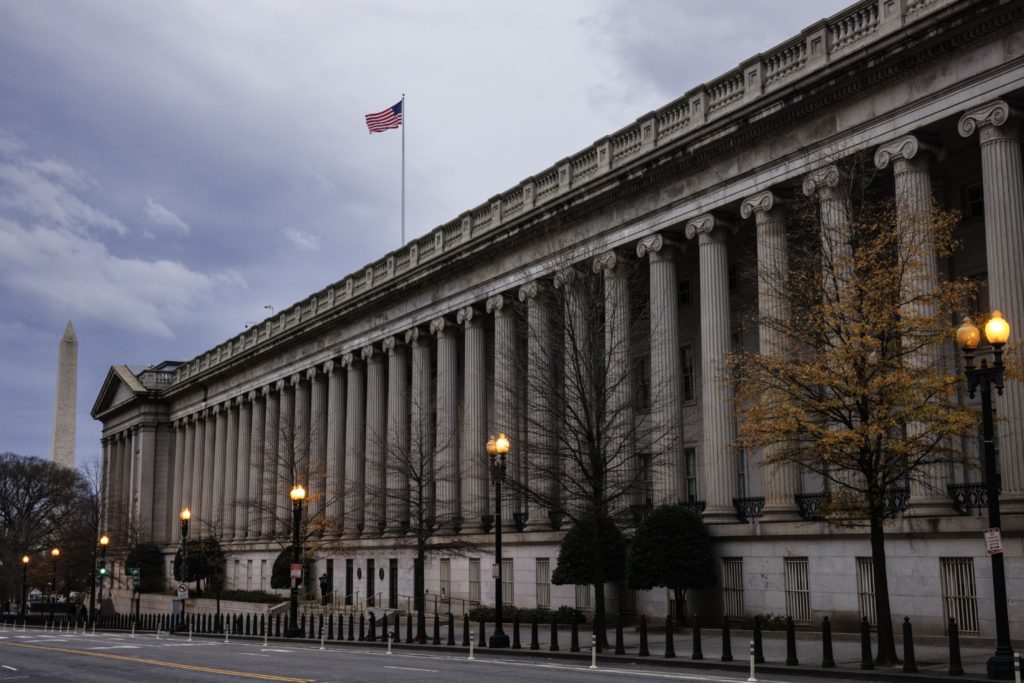(Bloomberg) — Treasuries slid Tuesday, sending yield-curve premiums to the lowest in almost two years on increased speculation of a Federal Reserve rate hike in March.
The yield on two-year notes climbed as much as nine basis points to 1.06% as cash trading restarted after Monday’s holiday.
Ten-year Treasury yields rose as much as seven basis points to 1.85% — the highest since January 2020 — and have now climbed almost 35 basis points in less than three weeks.
Shorter yields are climbing faster than those on longer-dated notes, flattening the Treasury yield curve.
The gap between five- and 30-year yields fell below 50 basis points for the first time since March 2020, when the Covid pandemic began.
“The big theme in rates markets this year, particularly in the U.S., should be higher yields and flatter curves, as U.S.
rate hikes get underway,” said Andrew Ticehurst, a rates strategist at Nomura Holdings Inc. “History would suggest that 10-year yields are unlikely to peak before the first rate hike of the cycle.”
Verge of Positive
The moves seeped into other markets with sovereign yields around the globe extending their advance Tuesday.
German 10-year yields rose to within one basis point of turning positive for the first time since May 2019.
while Australian peers reversed an early decline to close higher. A gauge of the dollar strengthened for a third day as the rise in yields boosted demand for the world’s reserve currency.
German 10-Year Yields Are on the Verge of Turning Positive
Investors are increasingly concerned that elevated U.S.
inflation will force the Fed to tighten policy faster than expected, with swaps markets pricing in four 25 basis-point hikes within a year. Billionaire investor Bill Ackman has argued for a 50 basis points move in March, while Fed Governor Christopher Waller said there may be even as many as five hikes this year, depending on inflation.
“This all reflects bond markets catching up to the reality of inflation, that central banks are behind the curve and are now scrambling to get ahead of it,” said Stephen Miller, an investment consultant at GSFM, a unit of Canada’s CI Financial Corp.
“The market is scratching its head and saying we were just too complacent.”
Horror Start
Bonds have had a horror start to the year as a drumbeat of hawkish Fed commentary made it clear the central bank will move aggressively to control rising inflation.
Officials have also discussed trimming the balance sheet and said they don’t expect the omicron virus to impact their plans.
Benchmark Treasury yields are expected to end the year at 2.13%, according to economists surveyed by Bloomberg.
They traded at 1.82% as of 6:38 a.m. in New York.
The Bloomberg Dollar Spot Index climbed 0.2%, on track for its longest winning streak since November. The Australian and New Zealand dollars and Sweden’s krona were among the decliners as investors cut holdings of risk-sensitive currencies.
“Higher U.S.
interest rates via expectations of a more hawkish Fed, plus higher inflation expectations, are supporting the dollar,” said Imre Speizer, strategist at Westpac Banking Corp. in Auckland.











